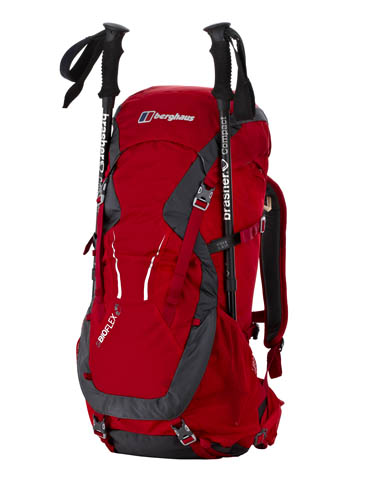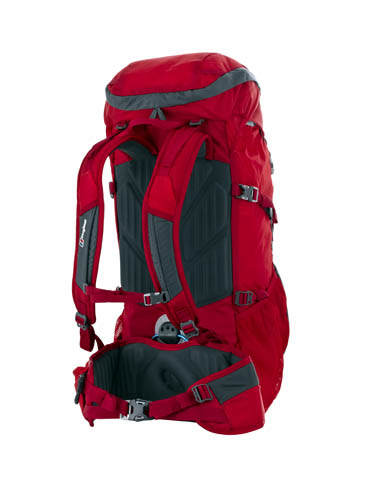Outdoors brand Berghaus has updated its large rucksack range, shaving more weight off and introducing further technical developments to its load carrying system.
The second-generation Bioflex packs are claimed by Berghaus to be among the lightest big packs available.
Introduced by its MtnHaus design and development team, the range includes rucksacks from 45 litres, available in women’s and men’s models, up to a 90+15 litre pack at the top end.
Berghaus said: “When it was launched in 2005, the first generation of Bioflex redefined load carrying for many serious backpackers.
“The concept proved to be hugely successful, but the MtnHaus team was nevertheless given the task of investigating how to improve the system.
“During an extended development process, they worked with the latest cutting edge technologies and manufacturing techniques to reduce weight and improve load transfer, movement and comfort, while maintaining the original principles of controlled movement.
“The new Bioflex system that has emerged takes another big leap forward in load carrying to offer a supremely advanced and comfortable range of packs. It represents Berghaus at its very best, adding to the growing collection of outstanding MtnHaus products.”
The Bioflex system has three elements: the hub, Cross-Load frame and Hyper Link hipbelt, which together make a frame that is 70 per cent lighter in weight than its predecessor.
The hub sits at the base of the pack delivers 3D movement using just four parts. It is anatomically positioned to allow the pelvis to move, tilt and twist on each step of a journey.
The Cross-Load frame supports the pack and directs the load to the hub, which in turn transfers it into the hipbelt and onto the pelvis. The frame is made out of highly resilient, flexible and lightweight DAC poles, allowing contra-lateral twist of the shoulders and pelvis while walking.
Berghaus said its Hyper Link hipbelt is a major leap forward in improving load carrying comfort, transferring the pack load to the wearer in an innovative way. Using super lightweight aluminium links, the hipbelt bends around the pelvis, while maintaining its vertical rigidity.
As a result, the load is spread around the pelvis and not solely concentrated at the base of the spine.
The company said the Bioflex system is also less tiring to use than a ‘static’ pack. “Tested alongside five other leading backpacks, an independent laboratory established that Bioflex is the most efficient, requiring less energy to carry during each day of use,” it added.
“Additional lab tests confirmed the durability of components such as the hub, while field testing by KLETS and Polish adventurer Rafal Krol helped the MtnHaus team to refine the back system and bag, which is fully featured.”
There are 10 Bioflex packs in the range.
Berghaus said: “Developing the second generation of Bioflex has been a massive project for the MtnHaus team.
“They had to be sure that what they were delivering was a significant improvement to an already very well regarded and successful system.
“With two patents pending and a back system that performs better than its predecessor, while being lighter in weight, confidence is high that Bioflex is ready to redefine load carrying – again.”
The packs are expected to appear in shops and online in early March.

